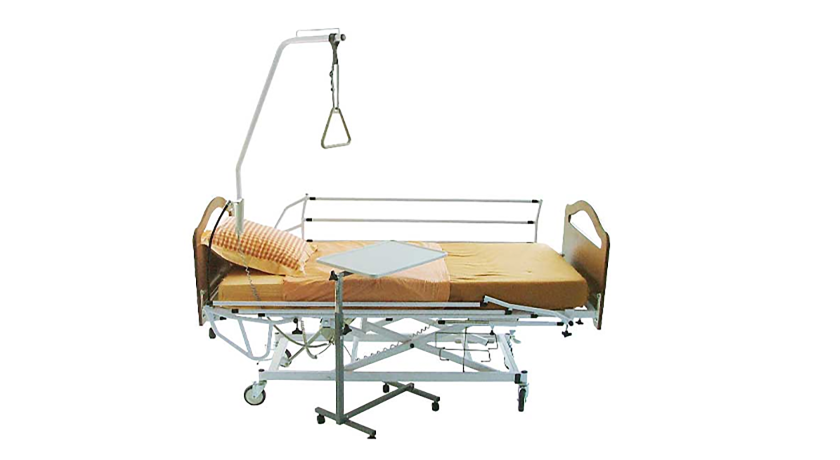Innovative Approaches to Mechanical Component Design for Enhanced Performance and Durability
Dec . 06, 2024 13:30
Mechanical Component Design An Overview
Mechanical component design is a critical aspect of mechanical engineering that focuses on creating and optimizing parts that are integral to various systems and machines. The primary aim of this discipline is to develop components that meet specified performance, reliability, and safety requirements while also being cost-effective and manufacturable. This article will explore the essential elements of mechanical component design, including the design process, key considerations, and some of the tools commonly used by engineers.
The Design Process
The mechanical component design process typically begins with the identification of the problem or requirement. This phase involves understanding the application, constraints, and the environment in which the component will operate. Engineers must gather information regarding load conditions, operational life, material availability, and environmental factors. This information is crucial for developing specifications that accurately reflect the intended use of the component.
Once the requirements are established, engineers move into the conceptual design phase. Here, brainstorming and sketching ideas take place, leading to the creation of preliminary designs. Prototyping may occur at this stage, allowing designers to explore different configurations and arrangements. This iterative phase is crucial, as it enables engineers to visualize solutions and evaluate their feasibility.
After selecting a viable concept, detailed design work begins. This includes precise calculations, simulations, and analyses to ensure that the component can withstand operational conditions. Engineers utilize various methodologies, such as Finite Element Analysis (FEA), to examine stress distribution and identify potential failure points. This stage may also involve selecting appropriate materials and manufacturing methods.
The final stages of mechanical component design include validation and testing. Prototypes are built and subjected to rigorous testing to assess their performance against predetermined criteria. This stage is essential for verifying that the designed component meets safety and functionality requirements, ultimately leading to modifications if necessary.
Key Considerations in Design
Several critical factors must be considered during mechanical component design. Firstly, load conditions, including static and dynamic loads, influence material selection and geometry. Engineers need to analyze the forces acting on the component throughout its operational lifecycle.
mechanical component design
Secondly, manufacturability is a crucial factor. The design must consider available manufacturing processes such as machining, casting, or plastic molding. Designs that are difficult or expensive to manufacture can lead to higher production costs and longer lead times.
Another vital aspect is reliability and maintenance. Components must be designed to operate without failure over their intended lifespan. This includes accounting for wear and tear and facilitating easy maintenance and replacement when necessary.
Additionally, sustainability is becoming increasingly important in mechanical component design. Engineers are now tasked with creating designs that minimize environmental impact through material selection, energy efficiency, and end-of-life considerations.
Tools and Technologies
Modern mechanical component design is heavily supported by advanced software tools and technologies. Computer-Aided Design (CAD) software allows engineers to create detailed 2D and 3D models, making it easier to visualize and modify designs. Furthermore, simulation tools such as Computational Fluid Dynamics (CFD) and FEA play a crucial role in analyzing the performance of components under different conditions, enabling designers to predict behaviors accurately.
Rapid prototyping techniques, such as 3D printing, have transformed the design process by providing fast and cost-effective methods to create physical models for testing and validation.
Conclusion
Mechanical component design is a multifaceted process that requires a thorough understanding of various engineering principles, creativity, and a strong focus on practicality. By adhering to a structured design process and utilizing advanced technologies, engineers can create efficient, reliable, and sustainable components tailored to meet the demands of modern applications. As the industry continues to evolve, the importance of innovative design practices will remain paramount, ensuring that mechanical components effectively contribute to the functionality of complex systems.
 Afrikaans
Afrikaans  Albanian
Albanian  Amharic
Amharic  Arabic
Arabic  Armenian
Armenian  Azerbaijani
Azerbaijani  Basque
Basque  Belarusian
Belarusian  Bengali
Bengali  Bosnian
Bosnian  Bulgarian
Bulgarian  Catalan
Catalan  Cebuano
Cebuano  Corsican
Corsican  Croatian
Croatian  Czech
Czech  Danish
Danish  Dutch
Dutch  English
English  Esperanto
Esperanto  Estonian
Estonian  Finnish
Finnish  French
French  Frisian
Frisian  Galician
Galician  Georgian
Georgian  German
German  Greek
Greek  Gujarati
Gujarati  Haitian Creole
Haitian Creole  hausa
hausa  hawaiian
hawaiian  Hebrew
Hebrew  Hindi
Hindi  Miao
Miao  Hungarian
Hungarian  Icelandic
Icelandic  igbo
igbo  Indonesian
Indonesian  irish
irish  Italian
Italian  Japanese
Japanese  Javanese
Javanese  Kannada
Kannada  kazakh
kazakh  Khmer
Khmer  Rwandese
Rwandese  Korean
Korean  Kurdish
Kurdish  Kyrgyz
Kyrgyz  Lao
Lao  Latin
Latin  Latvian
Latvian  Lithuanian
Lithuanian  Luxembourgish
Luxembourgish  Macedonian
Macedonian  Malgashi
Malgashi  Malay
Malay  Malayalam
Malayalam  Maltese
Maltese  Maori
Maori  Marathi
Marathi  Mongolian
Mongolian  Myanmar
Myanmar  Nepali
Nepali  Norwegian
Norwegian  Norwegian
Norwegian  Occitan
Occitan  Pashto
Pashto  Persian
Persian  Polish
Polish  Portuguese
Portuguese  Punjabi
Punjabi  Romanian
Romanian  Samoan
Samoan  Scottish Gaelic
Scottish Gaelic  Serbian
Serbian  Sesotho
Sesotho  Shona
Shona  Sindhi
Sindhi  Sinhala
Sinhala  Slovak
Slovak  Slovenian
Slovenian  Somali
Somali  Spanish
Spanish  Sundanese
Sundanese  Swahili
Swahili  Swedish
Swedish  Tagalog
Tagalog  Tajik
Tajik  Tamil
Tamil  Tatar
Tatar  Telugu
Telugu  Thai
Thai  Turkish
Turkish  Turkmen
Turkmen  Ukrainian
Ukrainian  Urdu
Urdu  Uighur
Uighur  Uzbek
Uzbek  Vietnamese
Vietnamese  Welsh
Welsh  Bantu
Bantu  Yiddish
Yiddish  Yoruba
Yoruba  Zulu
Zulu 












